
Expression for distance travelled in the nth second for a uniform
When we are talking about motion in a straight line with constant acceleration, there are three equations of motion, which are helpful in determining one of the unknown parameters: \ (\begin {array} {l}v = u + at\end {array} \) \ (\begin {array} {l}x = ut + \frac {1} {2}at^ {2} \end {array} \) \ (\begin {array} {l}v^2 = u^2 + 2as\end {array} \)
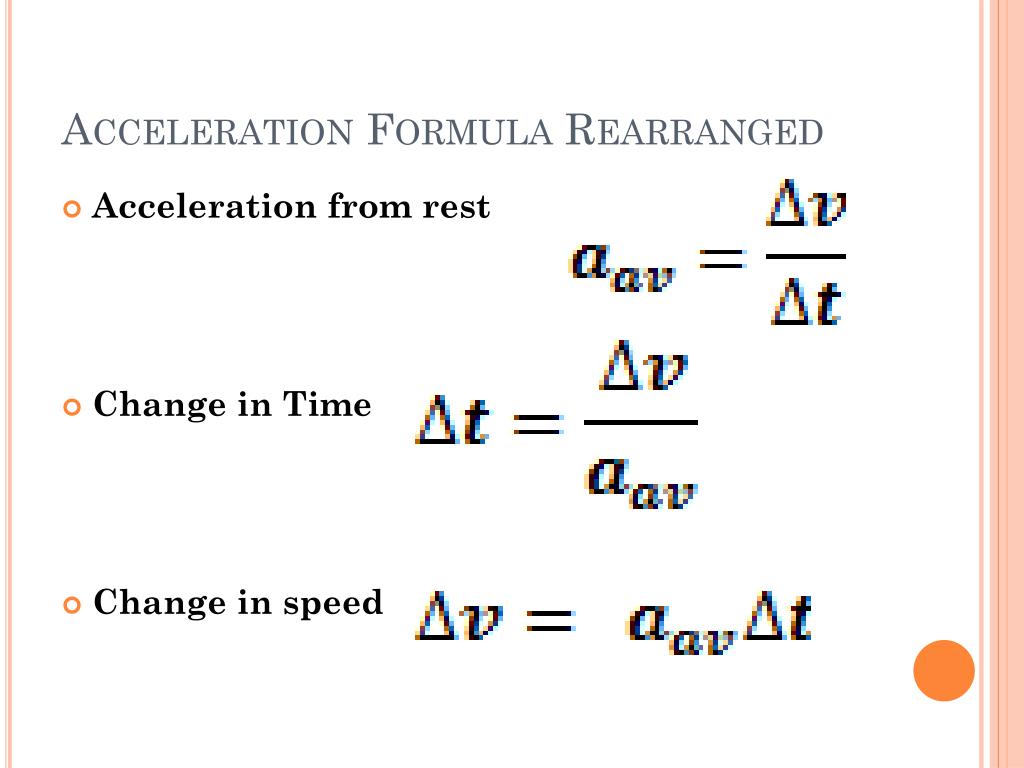
PPT Uniform Acceleration PowerPoint Presentation, free download ID
The equations that quantitatively describes uniform acceleration motion are explained. Let a be the acceleration u be the initial velocity at time t 1 v be the final velocity at time t 2 t = t 2 - t 1 x is the displacement between t 1 and t 2 x 0 is the initial position . The relationship between all the above quantities are given by the following equations:

UniformlyAccelerated Motion Quantitites, Equations & Examples
3.11. The equation v- = v0+v 2 v - = v 0 + v 2 reflects the fact that when acceleration is constant, v- v - is just the simple average of the initial and final velocities. Figure 3.18 illustrates this concept graphically. In part (a) of the figure, acceleration is constant, with velocity increasing at a constant rate.

Equations for Uniform Acceleration A level Physics YouTube
Uniformly Accelerated Motion Equations: (i) v = u + at (ii) s = ut + 12 at² (iii) v² = u² + 2as (iv) Distance travelled in rath second. s n = u + a2 (2n -1) If a body moves with uniform acceleration and velocity changes from u to v in a time interval, then the velocity at the mid-point of its path = u2+v2√ 2
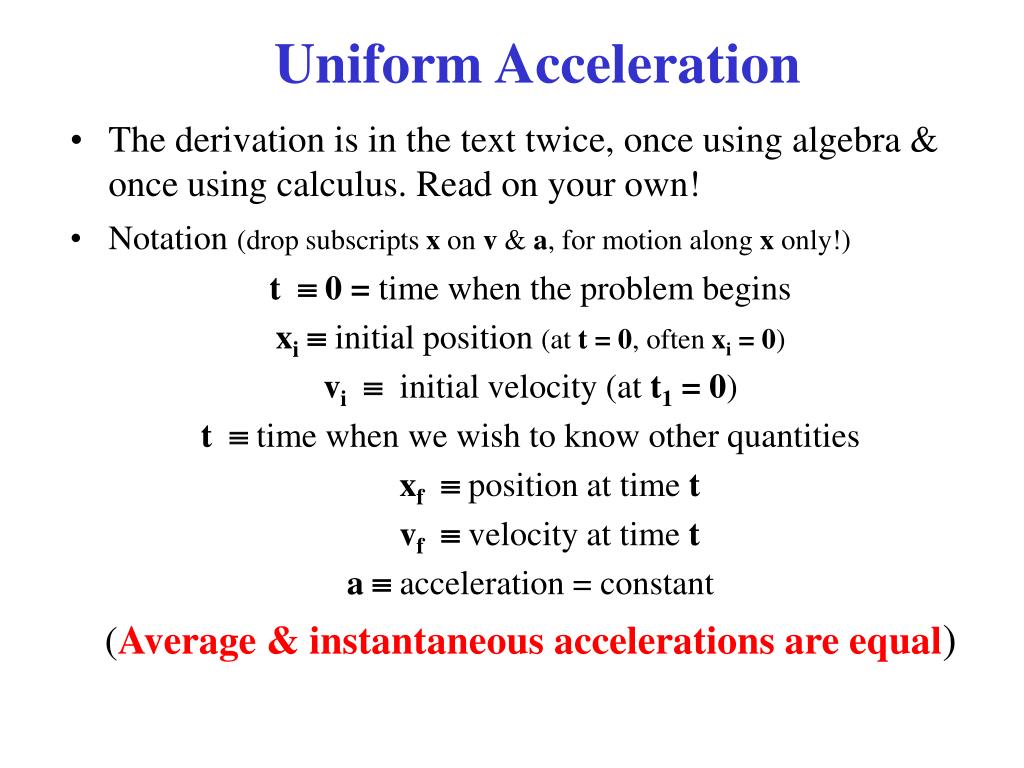
PPT Uniform Acceleration PowerPoint Presentation, free download ID
What is Uniform Acceleration? If the rate of change of velocity remains constant then the object is said to be in state of Uniform Acceleration. As we know acceleration is a vector quantity thus, the direction of motion remains the same in the case of constant acceleration. Uniform Acceleration Examples

AQA GCSE Physics (91) Uniform Acceleration. YouTube
What are the uniformly accelerated motion equations? Kinematic equations or uniformly accelerated equations are used to solve problems involving constant acceleration. The uniformly.
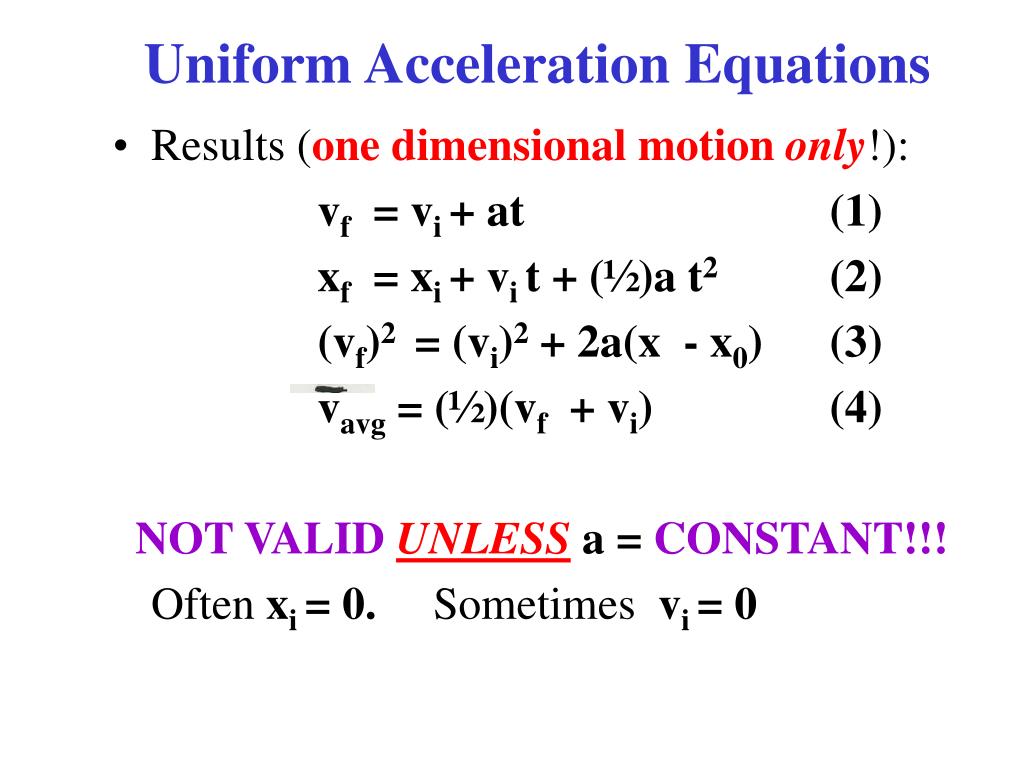
PPT Uniform Acceleration PowerPoint Presentation, free download ID
Since the acceleration is uniform, there is no need to use calculus to derive these. The first follows immediately from the meaning of acceleration. Distance travelled is the area under a speed : time graph. Figure VI.1 shows a speed : time graph for constant acceleration, and Equation \( \ref{eq:6.2.2}\) is obvious from a glance at the graph.
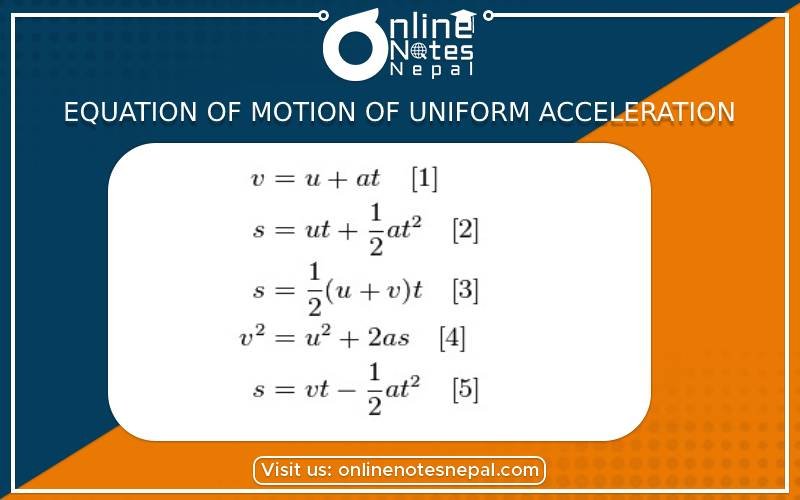
Equation of Motion of Uniform Acceleration in Grade 9 Science Online
AboutTranscript. Acceleration (a) is the change in velocity (Δv) over the change in time (Δt), represented by the equation a = Δv/Δt. This allows you to measure how fast velocity changes in meters per second squared (m/s^2). Acceleration is also a vector quantity, so it includes both magnitude and direction. Created by Sal Khan.
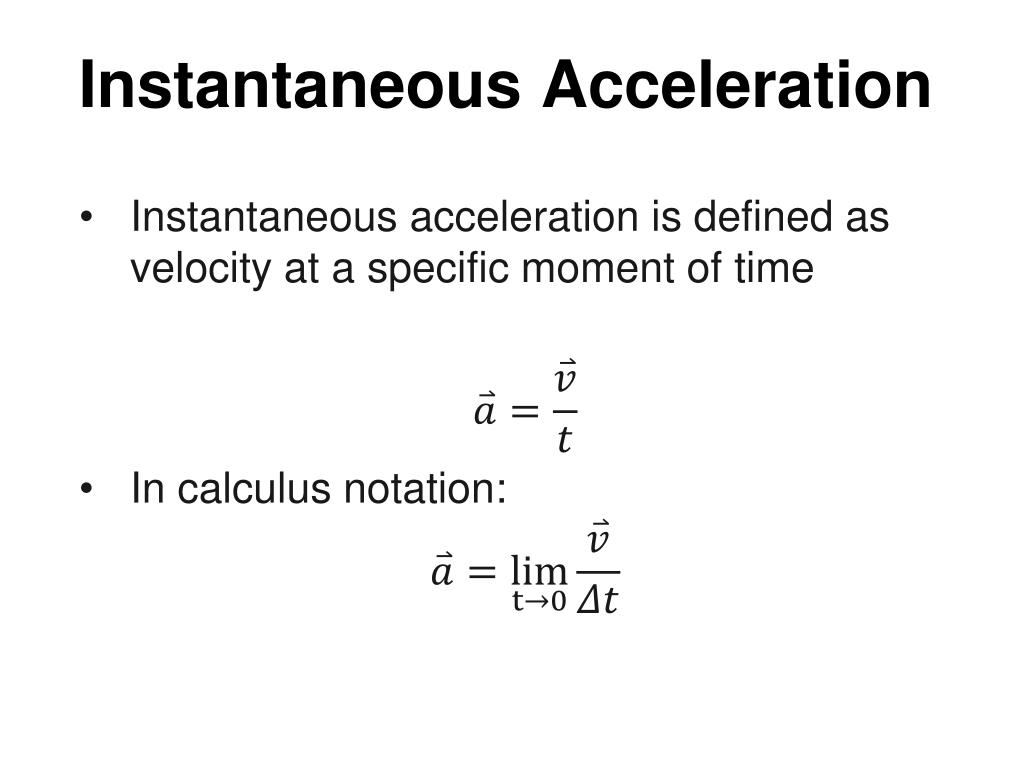
PPT Lesson 2 Uniform Acceleration PowerPoint Presentation, free
Acceleration is the rate of change of velocity of an object with respect to time in terms of both speed and direction. If there is a change in the velocity of an object, it is said to be accelerated. The change in velocity can either be an increase or decrease in speed or a change in the direction of motio n .
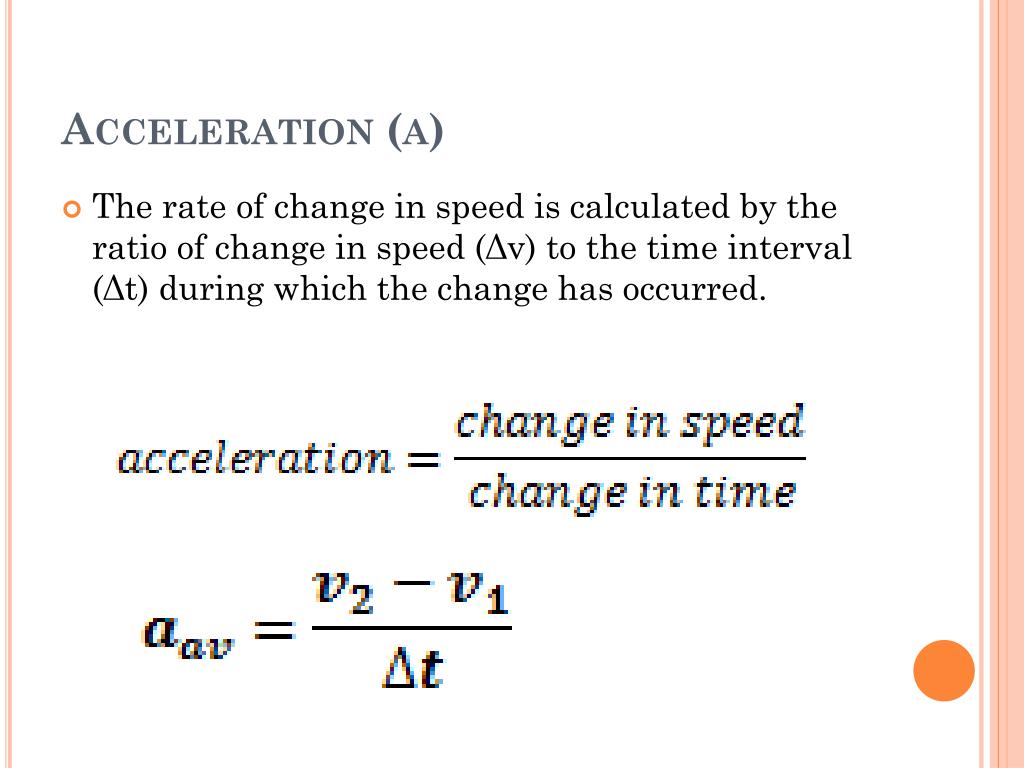
PPT Uniform Acceleration PowerPoint Presentation, free download ID
⇒ Velocity-time graphs can be used to derive various different formulas. ⇒ This velocity-time graph shows a vehicle increasing its velocity with a consent acceleration, a, from an initial velocity, u, to a final velocity, v, over a time, t. The first equation. The second equation. ⇒ Displacement = average velocity x time. ⇒ The average velocity is half way between the initial and final.
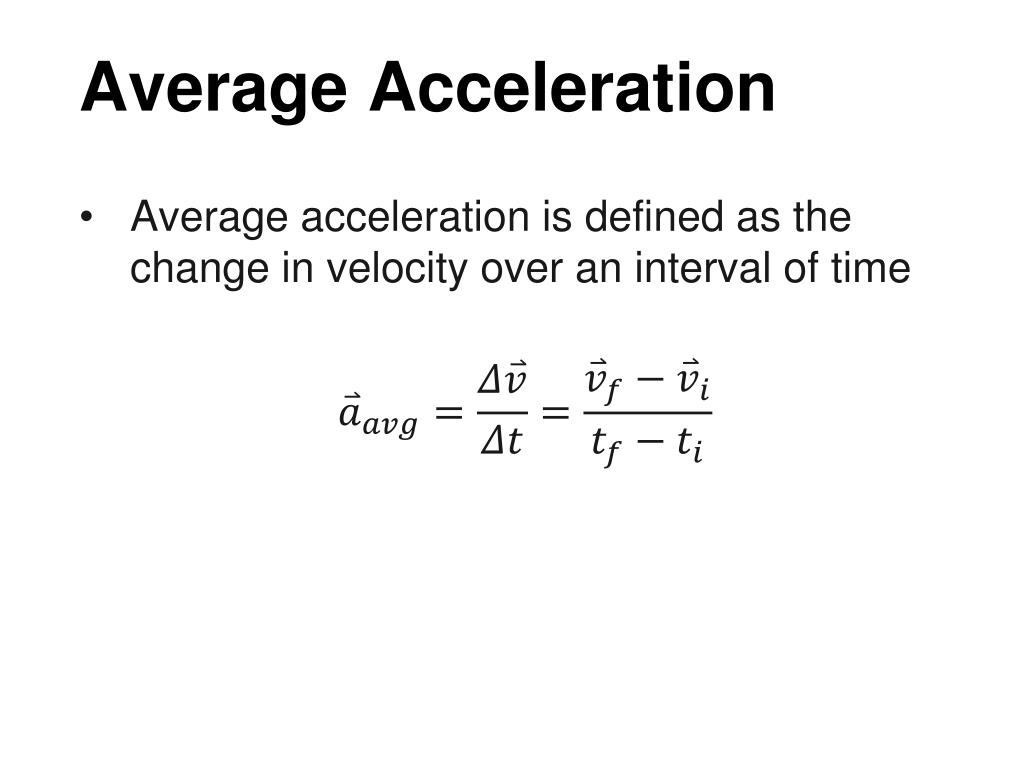
PPT Lesson 2 Uniform Acceleration PowerPoint Presentation, free
Acceleration is the change in velocity divided by a period of time during which the change occurs. The SI units of velocity are m/s and the SI units for time are s, so the SI units for acceleration are m/s 2. Average acceleration is given by. a¯ = Δv Δt = vf −v0 tf −t0. a ¯ = Δ v Δ t = v f − v 0 t f − t 0.
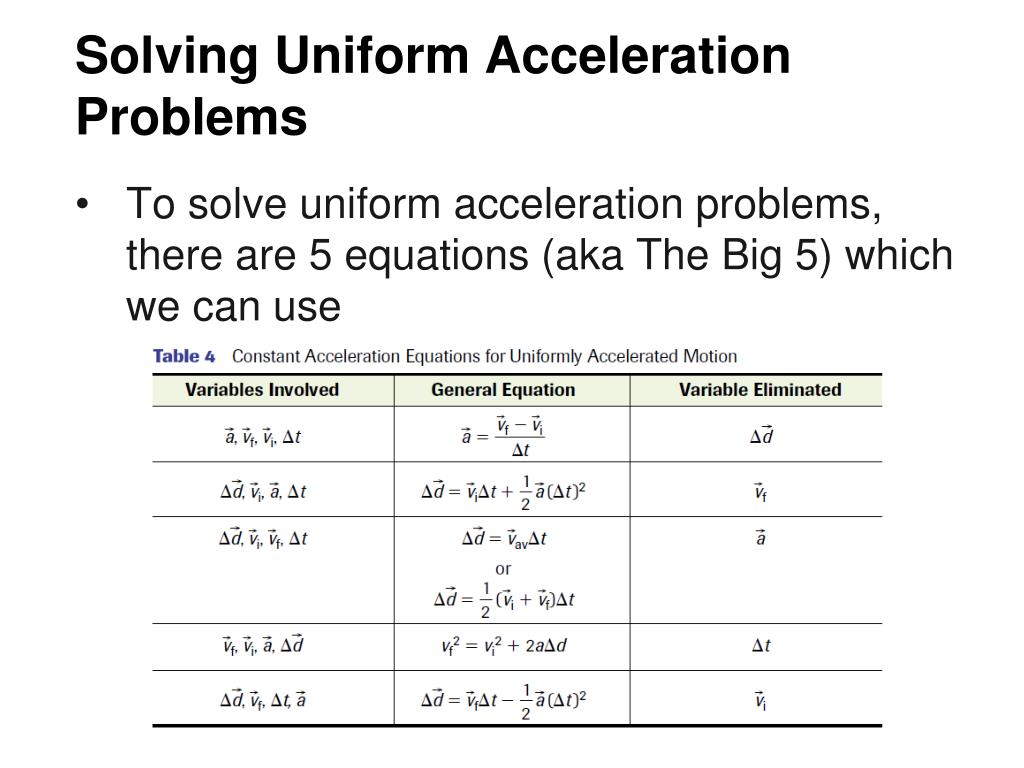
PPT Lesson 2 Uniform Acceleration PowerPoint Presentation, free
If an object starts with velocity "u" and after some time "t" its velocity changes to v, if the uniform acceleration is a and distance traveled in time (t) is s, then we obtain the following kinematic equations of uniformly accelerated motion. First Equation Of Motion
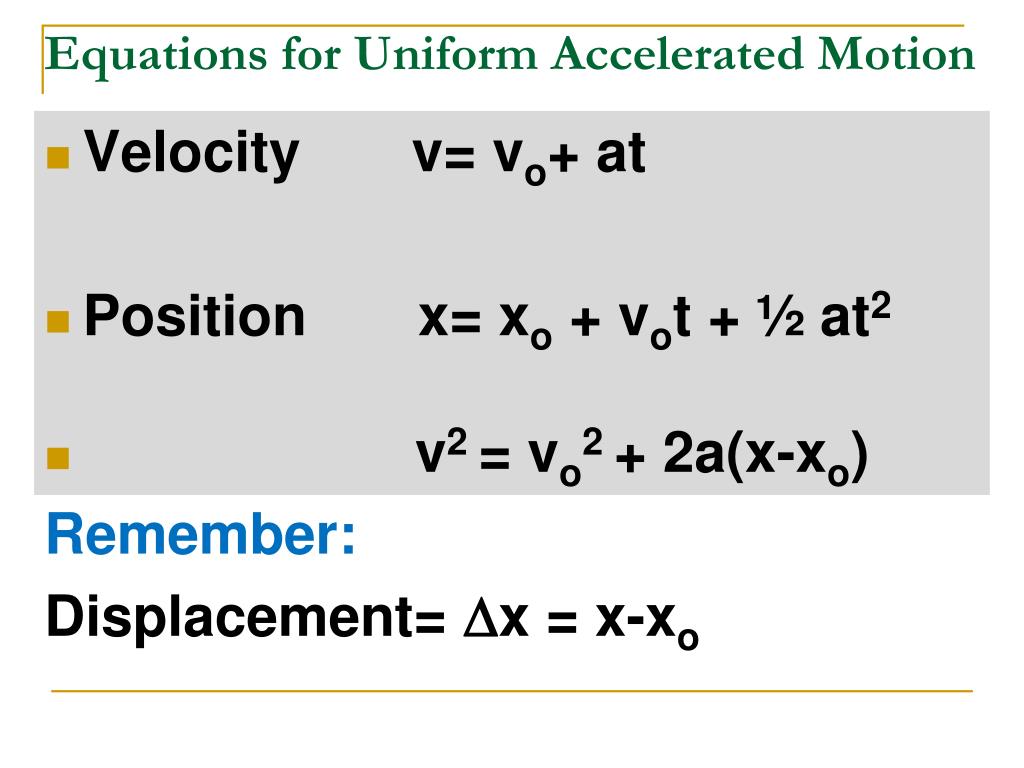
PPT Equations of Uniform Accelerated Motion PowerPoint Presentation
So a velocity might be "20 m/s, downward". The speed is 20 m/s, and the direction is "downward". Acceleration is the rate of change of velocity. Usually, acceleration means the speed is changing, but not always. When an object moves in a circular path at a constant speed, it is still accelerating, because the direction of its velocity is changing.
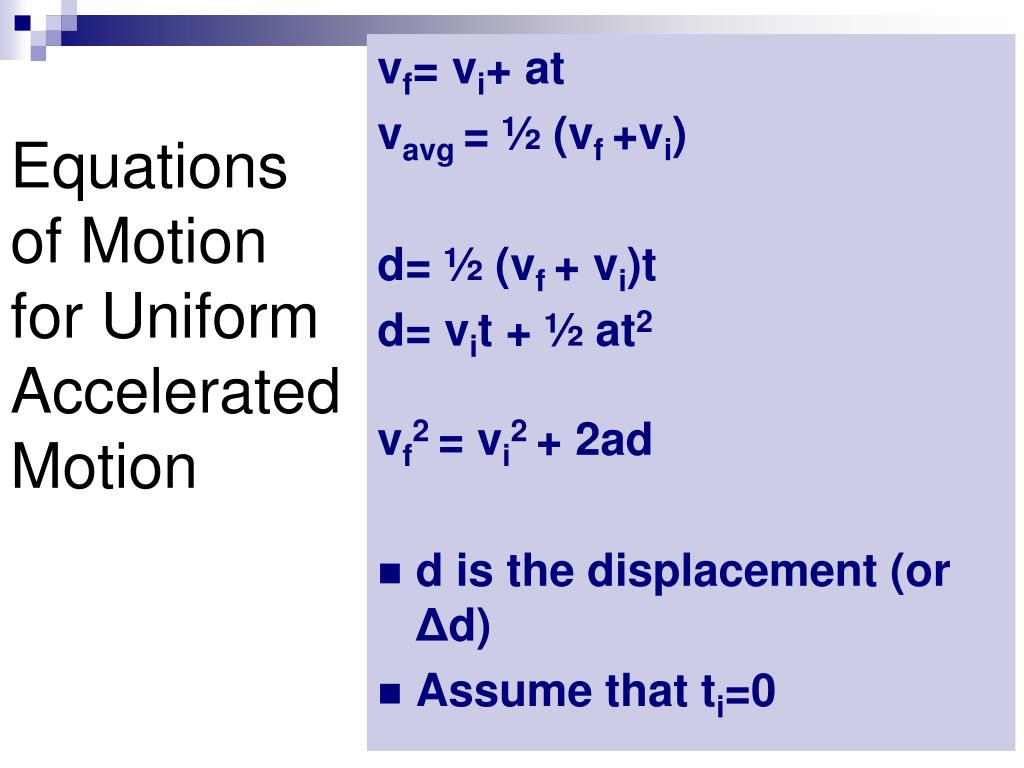
PPT Equations of Uniform Accelerated Motion PowerPoint Presentation
The SI unit of Acceleration is m/s2 and the dimensions of Acceleration are M0 L1T -2 . We are familiar with the concept of Uniform Motion, if an object covers equal Displacement in an equal interval of time it is said to be undergoing Uniform Motion. Now the question is what is meant by Uniform Acceleration? Define Uniform Acceleration

The Derivative and Uniformly Accelerated Motion Equations YouTube
To state this formally, in general an equation of motion M is a function of the position r of the object, its velocity (the first time derivative of r, v = drdt ), and its acceleration (the second derivative of r, a = d2r dt2 ), and time t. Euclidean vectors in 3D are denoted throughout in bold.

HOW TO PROVE EQUATIONS OF UNIFORMLY ACCELERATED MOTION. YouTube
Here are the main equations you can use to analyze situations with constant acceleration. What are the kinematic formulas? The kinematic formulas are a set of formulas that relate the five kinematic variables listed below. Δ x Displacement t Time interval v 0 Initial velocity v Final velocity a Constant acceleration